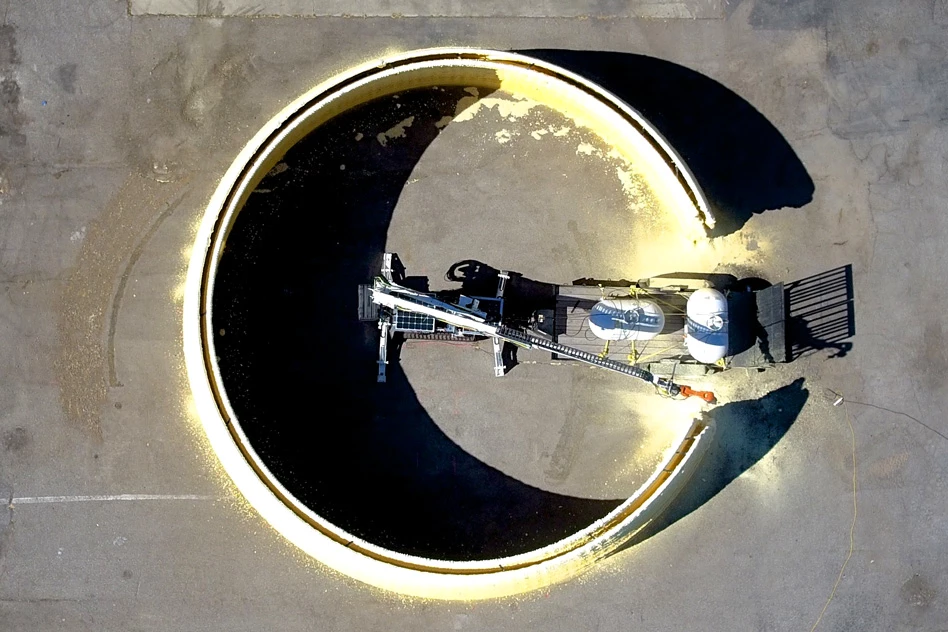This MIT robot, rolling on tank tracks, can already 3D-print a concrete dome structure in 14 hours. But the development team has plans to have it roaming the land on its own, selecting and clearing building sites, designing homes, gathering building materials and completing construction without any human intervention.
If you're a pessimist, you can start adding "construction worker" to the long list of jobs that are coming under threat from an accelerating wave of technological development.
It seems fairly clear at this point that large-scale 3D printing has some pretty awesome potential. We've already seen how automated, on-site 3D printing machines can smash out 10 basic concrete houses in the space of 24 hours.
We've seen the massive cost and waste savings that additive manufacture can unlock compared to traditional construction, and the freedom they offer in terms of shape and design.
Now, an MIT team has demonstrated its own prototype, a 3D printing robot that rolls around on tank-style tracks. While it's currently capable of building a simple, 50-foot diameter insulated concrete dome structure inside 14 hours, the team has some pretty amazing ideas for its future.
It's intended to eventually become fully self-sufficient. Powered by solar panels, the team envisions it as a machine that can be sent out to a remote area, where it will assess the landscape, then clear and prepare a building surface.
Using what it's learned about the available space, the machine will come up with its own design for a structure tailored to that specific spot. If one side's exposed to high winds, for example, maybe a curved wall could improve strength. Windows and insulation can be placed for optimal thermal efficiency.
The robot will then run around harvesting building materials from the local environment, and go ahead and build the damn thing.
The MIT team's vision is for "something totally autonomous, that you could send to the Moon or Mars or Antarctica, and it would just go out and make these buildings for years," according to Steven Keating, Ph.D, who is working on the project.
There's a way to go to reach that point, obviously. The current prototype is simply able to tow its own supply of insulating foam and concrete about, spray a foam mold down and fill it with concrete, thus building the underlying structure of the dome, as well as more complex shapes like built-in benches.
The foam shell can be left in place as insulation, with interior and exterior finish materials applied to the outside of it.
But rudimentary as this first step is, Keating says that it's ready to roll in its current form. "We also wanted to show that we could build something tomorrow that could be used right away," he says. "With this process, we can replace one of the key parts of making a building, right now. It could be integrated into a building site tomorrow."
Check out a video of the prototype in action below.
Source: MIT





